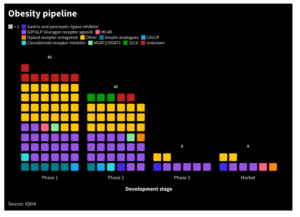![EB_Winter_2017_nasamu_Malaria-in-cell_tg.jpg An electron micrograph of a malaria parasite inside its host red blood cell, ready to burst out. The small merozoites will each find a new red blood cell to invade and grow within. (Picture: Armiyaw Nasamu and Wandy Beatty, Washington University])](https://european-biotechnology.com/wp-content/uploads/2024/04/EB_Winter_2017_nasamu_Malaria-in-cell_tg.jpg)
Plasmodium locked in
For decades, researchers have searched without success for a strategy to prevent malaria. Now, two teams of researchers present a solution that circumvents the problem of surface antigen hypervariability of Plasmodium. Their drug candidate blocks the pathogens' release from blood cells, resulting in prevention of the life-threatening hot stages.
In 2015, the World Health Organization counted 212 million malaria cases worldwide, resulting in 429,000 deaths. Alternatives to existing drugs are urgently needed as resistant strains of malaria emerge. Now Armiyaw Nasamu (Science, doi: 10.1126/science.aan1478) and Paco Pino (Science, doi: 10.1126/science.aaf8675) have demonstrated that targeting two out of ten Plasmodium falciparum proteins, PMIX and PMX, could be a promising strategy to prevent the parasite from completing its life cycle. The researchers have developed two inhibitors that target the two plasmepsins that regulate the maturation of the enzymes required to disrupt host cell membranes.
Blocking processes crucial for multiplication and spread
Nasamu and colleagues from the US and the UK deployed new techniques to conditionally eliminate PMIX and PMX from the parasite during specific stages of its life cycle. The groups revealed that the proteins are essential for two crucial functions. Without PMIX, Plasmodium stages were unable to make intact rhoptries, specialised structures inside the parasite, which help Plasmodium invade red blood cells, where it replicates. The team also discovered that plasmepsin X processes a protein called SUB1. When deprived of plasmepsin X, the parasites couldn’t process SUB1 and were unable to infect red blood cells or exit these cells after multiplying, a process called egress that is necessary for the parasite to spread. The authors had previously identified several compounds that inhibit PMX and PMIX, including CWHM-117, a compound discovered in 2013, which was reported to show anti-malarial efficacy in mouse models.
Pino and colleagues from Switzerland, Norway, Finland, and the UK developed an inhibitor that targets both PMIX and PMX called 49c. The new compound achieved 99.9% parasite clearance in culture after 48 hours – comparable to the killing profile of chloroquine, the current standard of care. In mouse models of malaria, parasites were completely undetectable in the blood after two weeks of daily 49c treatment. Importantly, 49c also blocked malaria from completing the sexual stages of its life cycle in mosquito vectors, highlighting the compound’s potential as a transmission-blocking agent. Treating mice with 49c 30 hours before allowing mosquitoes to bite rodents prevented the parasite from forming structures called oocysts in the insects’ midguts. The scientists demonstrated that 49c both trapped malaria inside red blood cells and prevented the parasite from invading, and that the compound was active against both blood and liver stages.
(First published in European Biotechnology, Winter Edition 2017)


 IQVIA
IQVIA White House
White House Clarivate
Clarivate